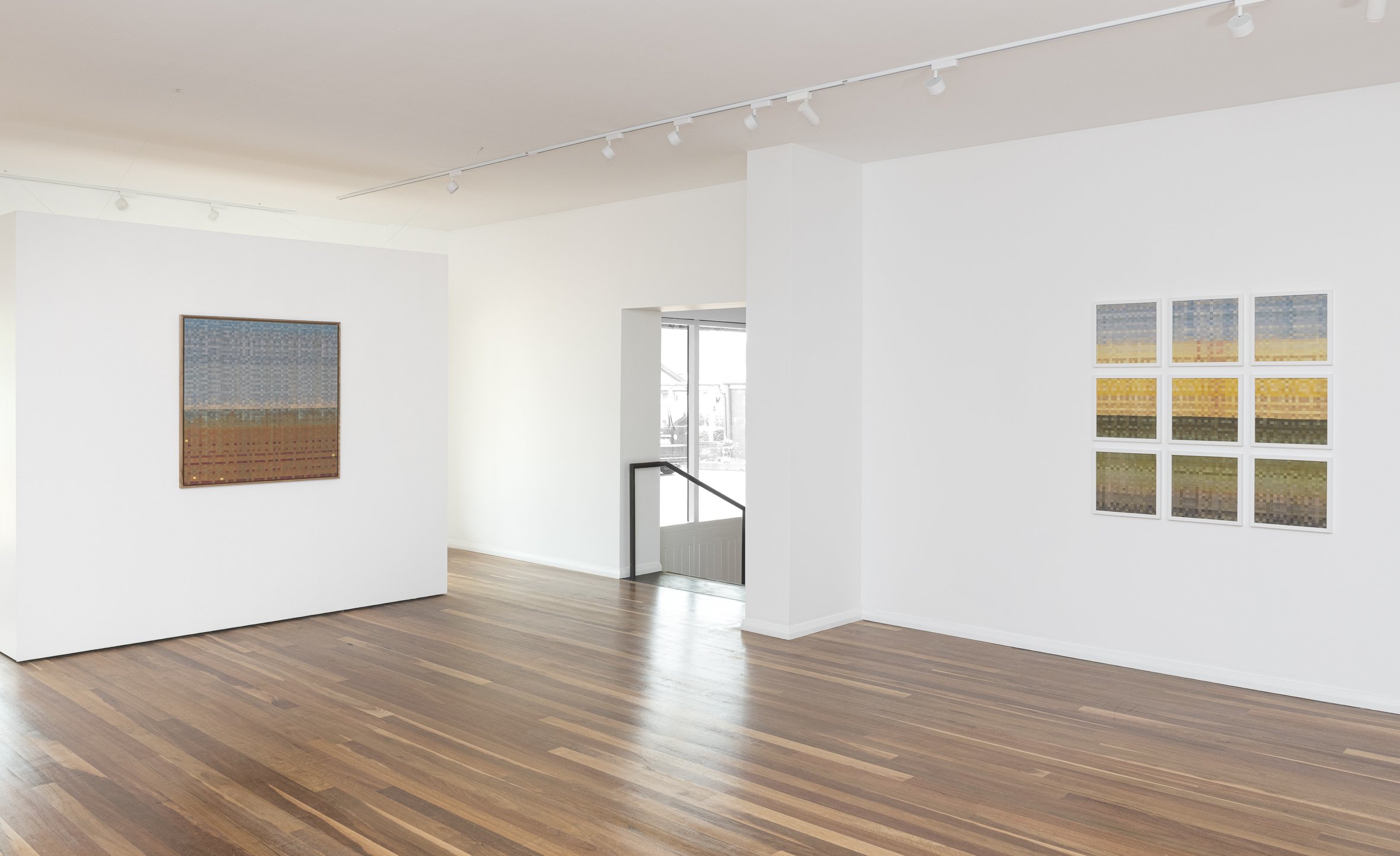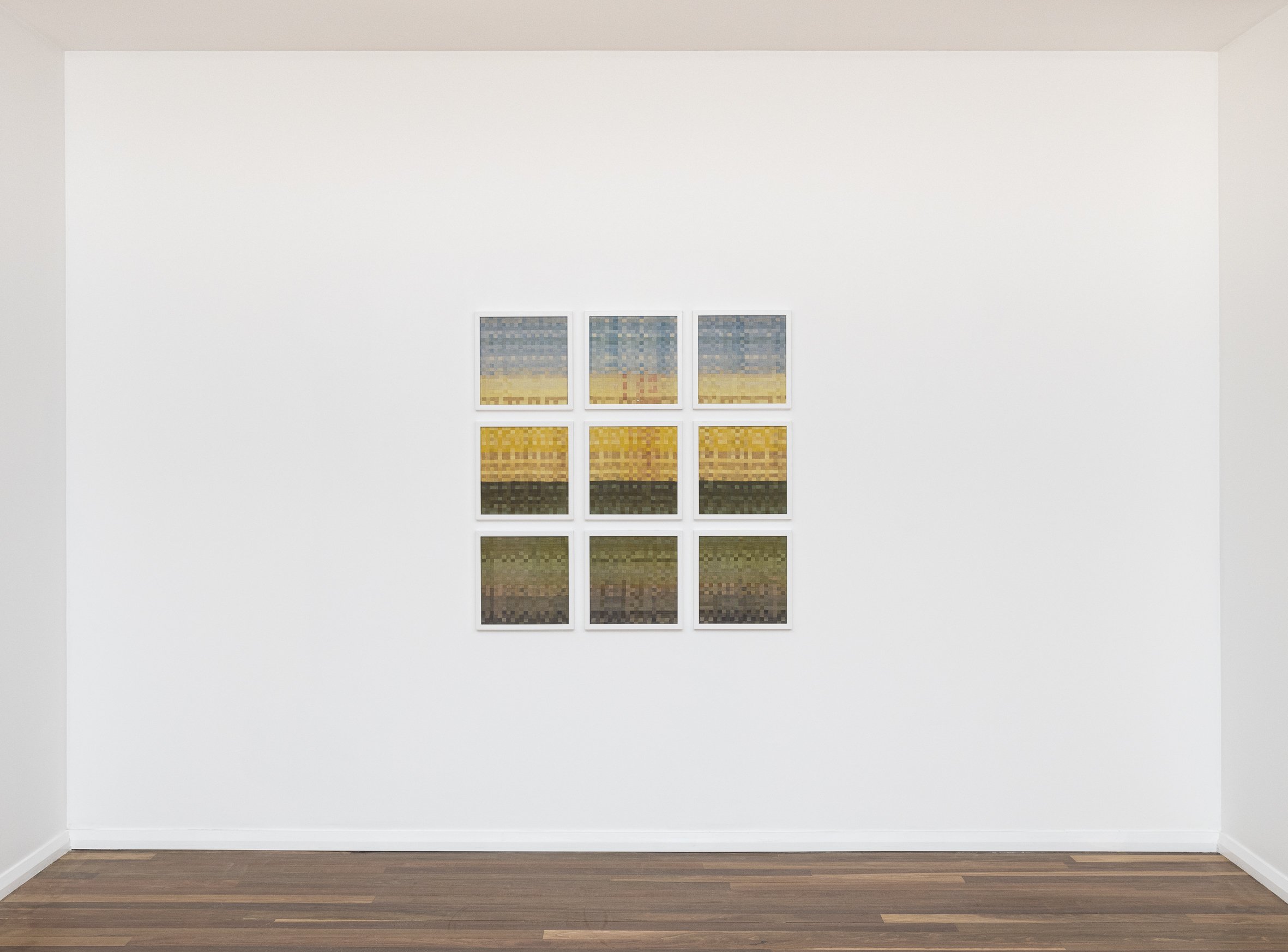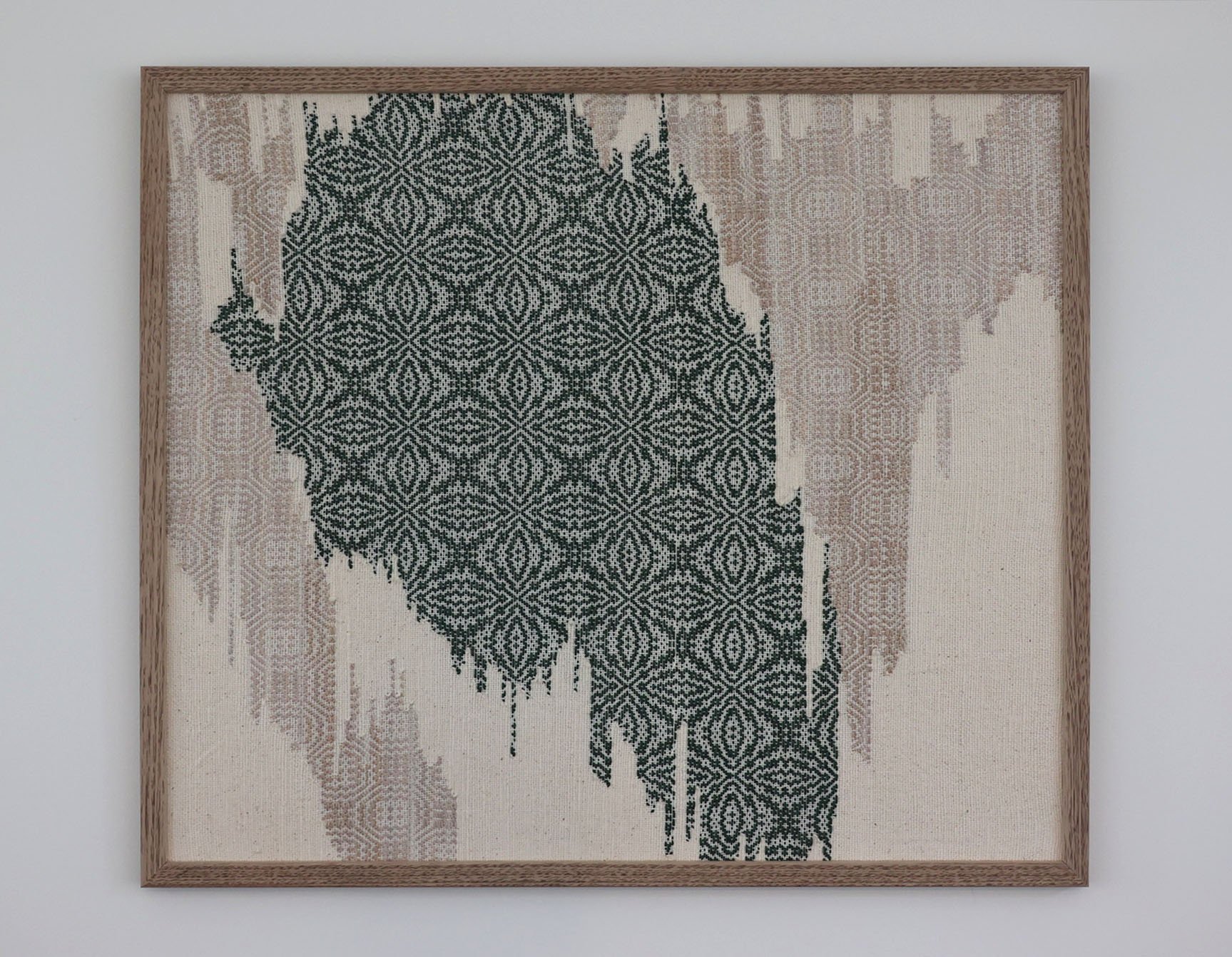Slow pixels.
In our rush to memorialise landscapes in digital form, we tend to miss the feel and experience of a place. We pixelate it, share it and wait for the likes to ping in to give us the sense of “I was there” satisfaction, but miss the essence of the place. By juxtaposing the improbably slow, laborious process of naturally-dyeing and weaving silk into a structured grid against a hastily-shot photograph, this series of work is a woven metaphor for our increasingly detached interactions with nature, and forms part of an ongoing conversation around how we exist in the world.

'Slow pixels' installation view, Jennings Kerr 2024 (Photo credit: Ashley Mackevicius)

'Slow pixels' installation view, Jennings Kerr 2024 (Photo credit: Ashley Mackevicius)

'Slow pixels' installation view, Jennings Kerr 2024 (Photo credit: Ashley Mackevicius)

'Slow pixels' installation view, Jennings Kerr 2024 (Photo credit: Ashley Mackevicius)

'Slow pixels' installation view, Jennings Kerr 2024 (Photo credit: Ashley Mackevicius)

'Slow pixels' installation view, Jennings Kerr 2024 (Photo credit: Ashley Mackevicius)

Bay of Fires (hashtag dronephotooftheday) (2023) // Glover Prize 2023 Finalist

The blue of distance (hashtag sunset) (2022)

An hour out of Alice (landscape at 130kph) (2022) // Nick Waterlow (OAM) Highly Commended Award, Macquarie Emerging Art Prize 2022

An impossible shade of red (2023) // Hadley's Art Prize 2023 Finalist
Juxtapose.
Two sets of silk threads are naturally dyed and then woven together to create the canvas: one set of threads is a highly planned mathematically-calculated grid, dyed and wound in a precise order; the other resist-dyed through dips into dye pots in an unplanned, random way. The two sets of threads overlap and intersect continuously as the cloth is woven: the structured order of the grid inevitably becoming undone and dissolved by the organic. This series is a part of an ongoing woven metaphor for our increasingly detached and detrimental interactions with nature, and our desire to have the natural world presented to us in a sanitised, screen-mediated and predictable grid.

Between a wolf and a dog (2022)

I can't compete with your pretty (2022)

No place for their eyes to rest (2021) // Alice Prize 2022 Finalist
Torn wallpaper.
The walls of an old house have born silent witness to generations of people’s lives. Oh the stories they can (and do) tell! This series of woven works evokes the layering of wallpapers in a house - torn, worn away and replaced over time. It illustrates the layering of life, and the damage, decay and considered repair to a house by its occupants over time, each with the goal to make it feel like home.
A single woven piece of cloth binds all the seemingly seperate layers together, just as the four walls of a house unwittingly bind those generations of lives lived within them.

The Darling at The Star commission for penthouses and Stellar Suites (Photo credit: Wendell Levi Teodoro, courtesy of The Darling and Curatorial & Co)

The Darling at The Star commission for penthouses and Stellar Suites (Photo credit: Wendell Levi Teodoro, courtesy of The Darling and Curatorial & Co)

The Darling at The Star commission for penthouses and Stellar Suites (Photo credit: Wendell Levi Teodoro, courtesy of The Darling and Curatorial & Co)

The Darling at The Star commission for penthouses and Stellar Suites (Photo credit: Wendell Levi Teodoro, courtesy of The Darling and Curatorial & Co)

The Darling at The Star commission for penthouses and Stellar Suites (Photo credit: Wendell Levi Teodoro, courtesy of The Darling and Curatorial & Co)

The Darling at The Star commission for penthouses and Stellar Suites (Photo credit: Wendell Levi Teodoro, courtesy of The Darling and Curatorial & Co)

The Darling at The Star commission for penthouses and Stellar Suites (Photo credit: Wendell Levi Teodoro, courtesy of The Darling and Curatorial & Co)

The Darling at The Star commission for penthouses and Stellar Suites (Photo credit: Wendell Levi Teodoro, courtesy of The Darling and Curatorial & Co)

The Darling at The Star commission for penthouses and Stellar Suites (Photo credit: Wendell Levi Teodoro, courtesy of The Darling and Curatorial & Co)

Bitten by witch fever III (2021) // Corner Store Gallery Mini Series Prize 2021 Finalist

Bitten by witch fever II (2021) // Corner Store Gallery Mini Series Prize 2021 Finalist

Bitten by witch fever I (2021) // Corner Store Gallery Mini Series Prize 2021 Finalist

If these walls could talk II (2020) // Kangaroo Valley Arts Prize 2020 Finalist

If these walls could talk (2020) // Meroogal Women's Art Prize 2020 Finalist
